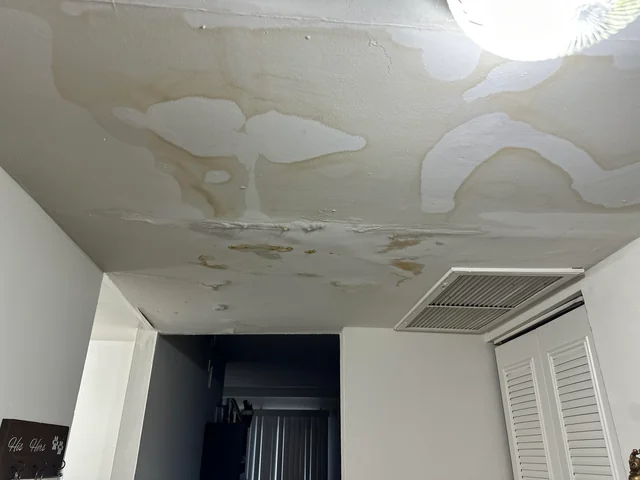Discovering that your upstairs toilet has overflowed and leaked through the ceiling can be a homeowner’s worst nightmare. Learn how to handle this situation effectively and prevent further damage.

Upstairs Toilet Overflowed And Leaked Through Ceiling: Causes and Immediate Actions
When an upstairs toilet overflows, it can quickly lead to water seeping through the ceiling below. This often happens due to:
- Clogs: A common cause is a clogged toilet drain, which prevents water from flushing down properly.
- Faulty Fill Valve: If the fill valve malfunctions, it can cause the toilet bowl to overflow.
- Sewer Line Issues: Problems with the sewer line can also lead to toilet backups.
- Excessive Flushing: Using too much toilet paper or flushing non-flushable items can overwhelm the toilet’s drainage capacity.
Immediate Steps to Take When Your Toilet Overflows
- Turn Off the Water: Locate the shut-off valve near the toilet and turn it off to stop water flow to the toilet.
- Contain the Water: Use towels or a mop to soak up standing water around the toilet to prevent further spreading.
- Inspect the Ceiling: Check the ceiling below the affected area for signs of water damage or bulging. If the ceiling is bulging, puncture it with a screwdriver to release the water and prevent the ceiling from collapsing.
Assessing the Damage
Water Damage to the Ceiling
- Water from an upstairs toilet can cause stains, sagging, or even collapse of the ceiling below.
- Mold and mildew growth may occur if the area is not properly dried and treated.
Flooring and Wall Damage
- Water can seep into flooring and walls, causing warping, stains, and potential structural damage.
Repairing the Damage
Ceiling Repair
- Remove Damaged Materials: Cut away any damaged ceiling materials such as drywall or plaster.
- Dry Out the Area: Use fans and dehumidifiers to dry out the affected area thoroughly.
- Replace Materials: Replace damaged drywall or plaster and repaint as necessary.
Addressing Flooring and Wall Damage
- Dry and Clean: Ensure that floors and walls are completely dried and cleaned to prevent mold growth.
- Repair or Replace: Repair or replace damaged flooring or wall materials as needed.
Preventing Future Incidents
Toilet Maintenance
- Regular Inspections: Check toilets for leaks, clogs, or signs of wear regularly.
- Proper Use: Educate household members on what can and cannot be flushed down the toilet.
- Routine Maintenance: Schedule routine maintenance with a plumber to keep your toilet and plumbing in good condition.
Insurance Coverage
- Review your homeowner’s insurance policy to understand coverage for water damage from plumbing incidents.
Conclusion
Dealing with an upstairs toilet that has overflowed and leaked through the ceiling requires prompt action to mitigate damage and ensure the safety of your home. By understanding the causes, taking immediate steps, and addressing the damage effectively, you can minimize the impact of such incidents.
Read too: Striped Schoolhouse Ceiling Light Fixtures: Unveiling the Timeless Charm
Concerned about an overflowed toilet? Contact a professional plumber immediately to assess the situation and provide necessary repairs.